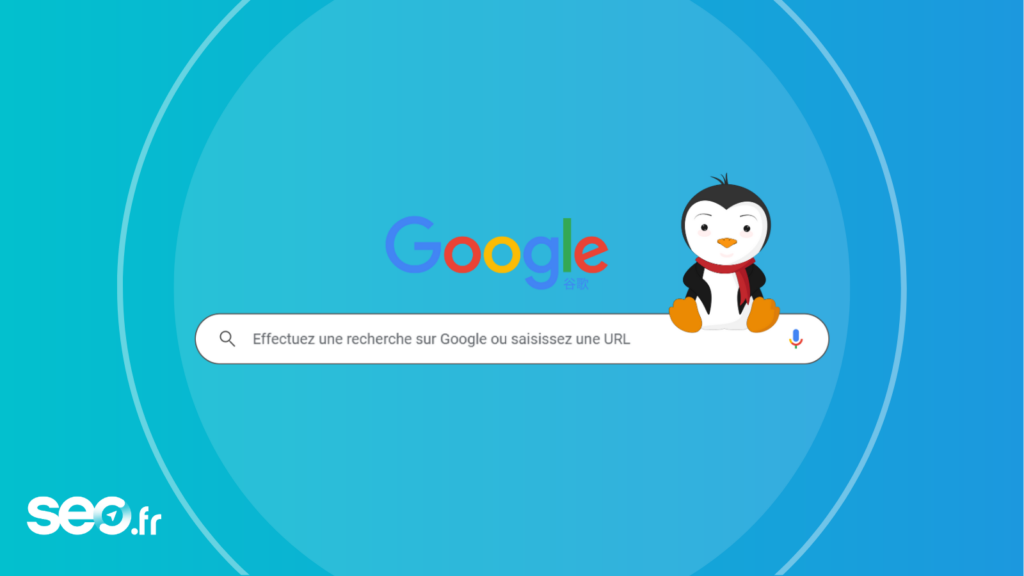What is link building?
Link building is an SEO technique aimed at demonstrating the popularity of a website in the eyes of search engines through links from other websites pointing to yours.
The aim is to increase the number of quality links pointing to the same site, in order to improve the popularity of that site in the eyes of Google.
Google has weighted the weight of external links to avoid any manipulation of its SERPs (Search Engine Results Pages), but they still have a significant influence on the search engine results.
How can we put in place a link building strategy that is both effective and sustainable? Link anchoring, semantic context, what makes a good backlink? We’ll answer all your questions.
Understanding link building
To better understand the importance of a good link building strategy, you first need to master the SEO jargon. What are backlinks and referring domains?
What is a link building strategy?
Link building is a crucial technique in SEO. Also known as “external linking”, it is a strategy that involves obtaining hypertext links, or “backlinks”, pointing to your website. The long-term aim is to improve your ranking and therefore your visibility.
For Google (and all the other search engines), links from external sites add value to yours. The signal they receive is as follows: the content of your site is recognized by others, and they refer to it. This criterion of authority and popularity of websites is one of the pillars of natural referencing.
It is therefore in your best interests to launch a link building campaign if you are looking to move up the SERPs.

What is a backlink?
A backlink is a hypertext link from another website. As it is located on a page external to the linked site, it is called an external link. In contrast, an internal link is a link between two pages of the same domain name.
Example: site A creates a link in one of its pages to site B .
Site B therefore benefits from a backlink or external link from site A.
What is a reference domain?
A referring domain is the name given to the site from which the external link originates. When search engines evaluate the popularity of site B, they see that site A is a referring domain for site B. They therefore give it popularity and trust. Showing search engine spiders that a site is popular and trustworthy is a sure and effective way of achieving better positioning in the SERP.
Receiving links from a large number of websites such as Site A will enable Site B to show that it is trusted by a large number of websites, and that search engines can therefore rank it in their results without fear.
Until 2012, this natural referencing technique simply consisted of multiplying the number of external links. Today, Google and the other search engines will also take a close look at the quality of the links I receive, to check that I’m not manipulating webmasters and over-requesting links to my site, which would go against the Google Guides, and could lead to my site taking a positioning penalty (loss of positions on a set of keywords).
Got an SEO question?
Julia can help
7 years of SEO expertise

Why are backlinks (still) important in SEO?
Since its launch, Google has ranked websites according to their popularity. At the time, its designers considered that popularity was a function of the number of external links pointing to the same site. So the more external links a domain name can claim to have pointing to its pages, the more popular it is, and therefore the more likely it is to rank in the top results.
While this may have been relevant at the time, this basic principle of the Google algorithm quickly became apparent as a flaw. At the time, all you had to do was exchange or buy links by the hundreds and you would immediately be catapulted to the first page.
In 2012, the leader in online search blew the whistle on SERP manipulation by deploying a filter called Google Penguin. Its aim is to penalize all sites that have or might be tempted to bypass its guidelines by acquiring low-quality links that are certainly intended to manipulate results.
Popularity: a fundamental criterion for search engines
Today, loading speed, https and user experience (UX) are just some of the hundreds of criteria that influence SERPs. Google’s aim is, of course, to refine the results it offers to make them as relevant as possible. But it’s also an opportunity for Google to reduce the scope of its core business: netlinking.
It may have lost some of its lustre, but it’s still a powerful lever for visibility, and one of the fundamentals of SEO that must be part of any good, long-term SEO strategy.
Call on our link building agency for your link acquisition strategy. A pioneer in SEO in France since 1998, SEO.fr offers you a complete netlinking service to consolidate your SEO.
Google Penguin, the penalty for bad links
If links are still one of the key criteria for your visibility in search engines, compliance with Google guidelines is essential. Indeed, a netlinking strategy that doesn’t take them into account often results in a Google penalty.
Among these is the Google Penguin filter deployed since April 24, 2012. This filter underwent several updates before finally becoming an integral part of the search engine’s algorithm. Its aim is to oust from the SERPs all sites seeking to manipulate its results via low-quality netlinking techniques (site networks, blog comments, etc.) or Black Hat (techniques frowned upon by search engines to modify their algorithms).
To avoid being penalized by Google, it’s essential to be vigilant about the quality of the sites you link to at any given moment, and also about how they evolve over time.
Want to be sure your site isn’t penalized by Google? Get advice from one of our SEO agency‘s Google penalty experts.

How to do good link building ?
In SEO, backlinks are still the basis of natural referencing. But not all backlinks are created equal. While some can be very useful for gaining a few places, others, on the contrary, can have a toxic effect.
So, what makes a good backlink? While this is obviously a matter for the SEO to decide, there are a number of criteria to consider:
- The theme: the incoming link must come from a site whose theme is similar or related to yours. It’s unlikely that a cooking portal would link to an online shoe store. On the other hand, if you run a cooking blog, a link to your content from a magazine on the same theme is sure to be appreciated by Google.
- Page indexing: if the page isn’t indexed in the search engines (i.e. it can’t appear in the search engines), neither is the link to it. Worse still, depending on the reason for non-indexing, the backlink may be toxic.
- Page position: links in the body of a page are far more influential than those in the footer or used for navigation. All this to avoid manipulation and spam. It’s no secret that Google is on the hunt for purchased links. As this type of link is generally found in the footer or sidebar, it makes sense for Google to give little credence to it.
- Backlinks from new sites carry more weight than new links from domains already referenced. So it’s better to have a link from 50 different domain names than 50 from a single site.
- Keywords in text carry more weight than those in the ALT attributes of linked images. This doesn’t mean, however, that you should give up these types of backlinks.
- Trusted and popular sites also have a stronger SEO influence
Do you need to increase and maintain your Google ranking? Implement a good netlinking strategy? Ask one of our SEO experts for an SEO audit!









